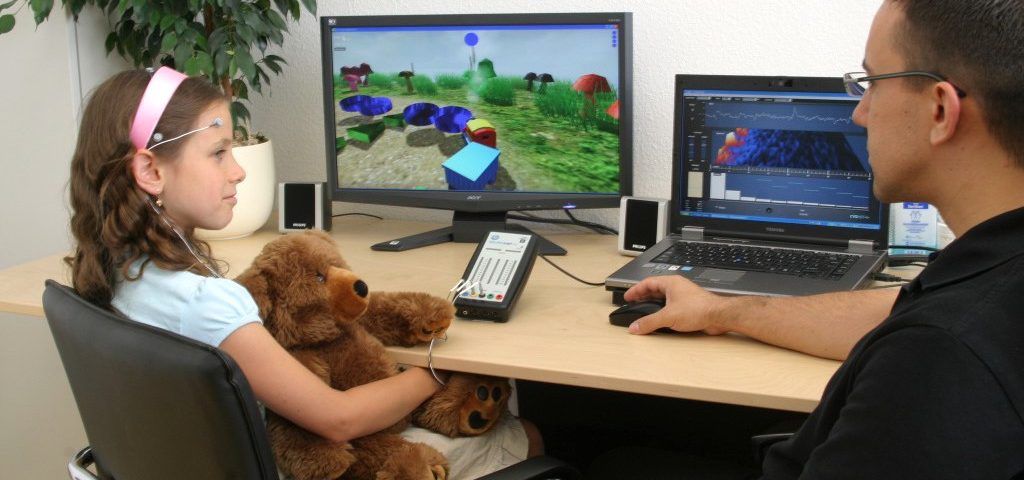Fascinating findings: “1. Neurofeedback yields significant reductions in parent ratings of inattentive and hyperactive-impulsive symptoms. 2. These reductions persist for up to 2–12 months after neurofeedback ends. 3. Although medication has a larger initial effect, symptom reductions resulting from neurofeedback and medication may be comparable over a more extended time period.”
In neurofeedback treatment for ADHD, individuals learn to alter their typical pattern of brainwave activity, i.e., EEG activity, to one that is consistent with a focused and attentive state.
This is done by collecting EEG data from individuals as they focus on stimuli presented on a computer screen. Their ability to control the stimuli, e.g., keeping the smile on a smiley face keeping a video playing, depends on their maintaining an EEG state that reflects focused attention.
Over time, most individuals better at this. Supporters of neurofeedback argue that learning to alter EEG activity and focus better during training eventually generalizes to real-world tasks that require strong attention skills, e.g., reading, homework, etc.
